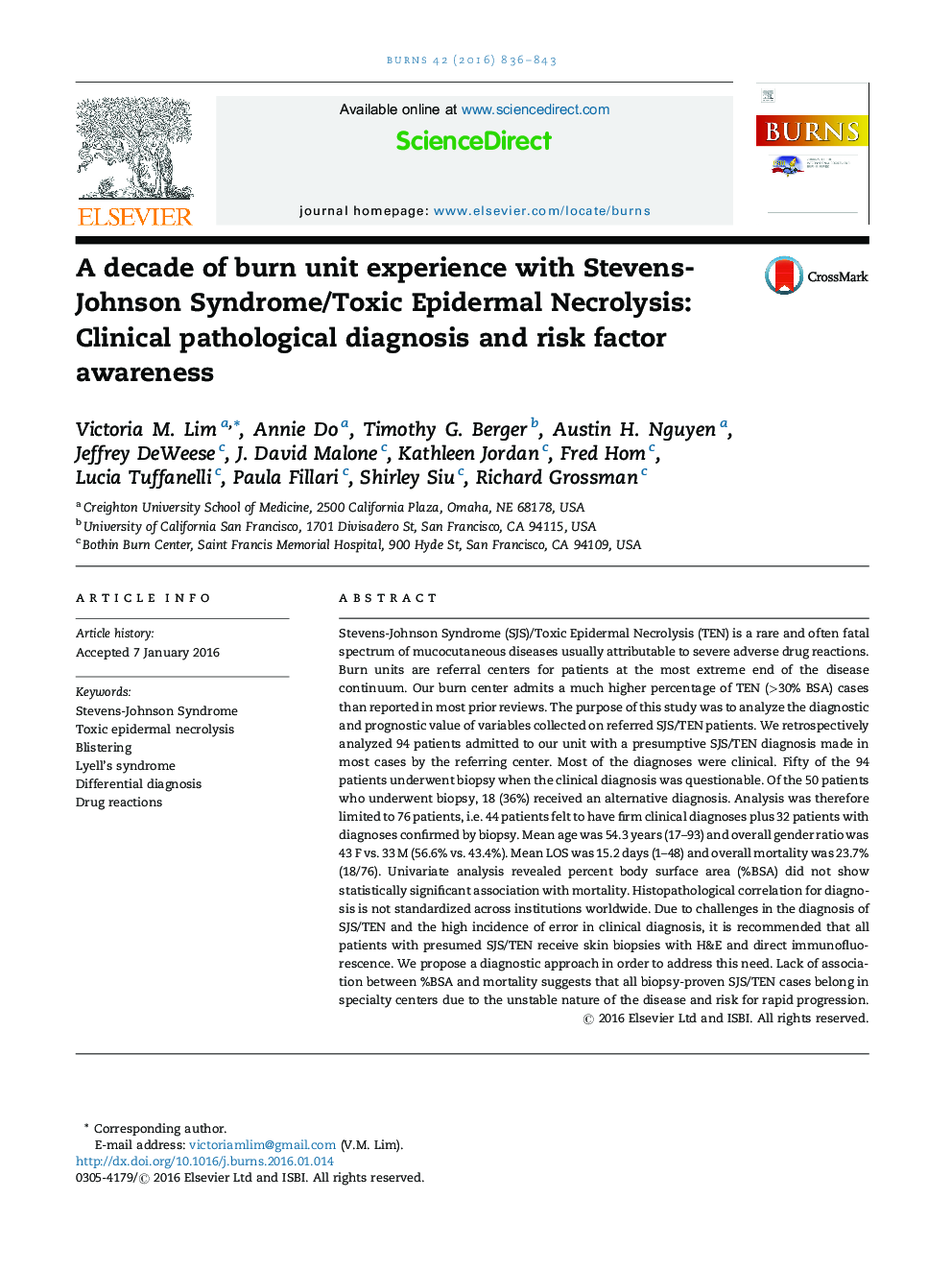| Article ID | Journal | Published Year | Pages | File Type |
|---|---|---|---|---|
| 3104093 | Burns | 2016 | 8 Pages |
•There exists a high potential rate of alternate diagnosis for admitted SJS/TEN cases.•Clinical pathological correlation for blistering diseases is strongly recommended.•Mortality was not found to correlate with %BSA.•All cases of SJS/TEN should receive the intensive management provided at tertiary care units.
Stevens-Johnson Syndrome (SJS)/Toxic Epidermal Necrolysis (TEN) is a rare and often fatal spectrum of mucocutaneous diseases usually attributable to severe adverse drug reactions. Burn units are referral centers for patients at the most extreme end of the disease continuum. Our burn center admits a much higher percentage of TEN (>30% BSA) cases than reported in most prior reviews. The purpose of this study was to analyze the diagnostic and prognostic value of variables collected on referred SJS/TEN patients. We retrospectively analyzed 94 patients admitted to our unit with a presumptive SJS/TEN diagnosis made in most cases by the referring center. Most of the diagnoses were clinical. Fifty of the 94 patients underwent biopsy when the clinical diagnosis was questionable. Of the 50 patients who underwent biopsy, 18 (36%) received an alternative diagnosis. Analysis was therefore limited to 76 patients, i.e. 44 patients felt to have firm clinical diagnoses plus 32 patients with diagnoses confirmed by biopsy. Mean age was 54.3 years (17–93) and overall gender ratio was 43 F vs. 33 M (56.6% vs. 43.4%). Mean LOS was 15.2 days (1–48) and overall mortality was 23.7% (18/76). Univariate analysis revealed percent body surface area (%BSA) did not show statistically significant association with mortality. Histopathological correlation for diagnosis is not standardized across institutions worldwide. Due to challenges in the diagnosis of SJS/TEN and the high incidence of error in clinical diagnosis, it is recommended that all patients with presumed SJS/TEN receive skin biopsies with H&E and direct immunofluorescence. We propose a diagnostic approach in order to address this need. Lack of association between %BSA and mortality suggests that all biopsy-proven SJS/TEN cases belong in specialty centers due to the unstable nature of the disease and risk for rapid progression.
